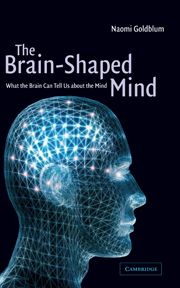Book contents
- Frontmatter
- Contents
- Preface
- Figure permissions and acknowledgments
- 1 Introduction
- 2 What the brain cannot tell us about the mind
- 3 How neurons form networks
- 4 Theories and models of how the mind functions
- 5 What are connectionist networks?
- 6 How our networks learn
- 7 Connecting the networks: how different things are related
- 8 Evidence for connectionist models
- 9 Two different types of memory
- 10 Coping with disaster
- 11 Practical implications
- 12 Criticism of connectionist theory
- Annotated references and suggested readings
- Index
12 - Criticism of connectionist theory
Published online by Cambridge University Press: 02 December 2009
- Frontmatter
- Contents
- Preface
- Figure permissions and acknowledgments
- 1 Introduction
- 2 What the brain cannot tell us about the mind
- 3 How neurons form networks
- 4 Theories and models of how the mind functions
- 5 What are connectionist networks?
- 6 How our networks learn
- 7 Connecting the networks: how different things are related
- 8 Evidence for connectionist models
- 9 Two different types of memory
- 10 Coping with disaster
- 11 Practical implications
- 12 Criticism of connectionist theory
- Annotated references and suggested readings
- Index
Summary
Until now I've been presenting the connectionist viewpoint of the way our minds work as if it were generally accepted. This is because, as I noted at the outset, it would have been far too annoying to repeat “according to the connectionists” in every paragraph. But actually this approach has come in for its share of criticism. Well, then, what sorts of criticisms are these? And how do connectionists respond to them?
The representationalists' criticism
Probably the most important criticism comes from a group of philosophers of science who espouse a theory known as “representationalism.” This theory is one of the “classical” theories I mentioned in the Introduction, and two of its most prominent advocates are Jerry Fodor and Zenon Pylyshyn. As an alternative theory of mental processes, it too is complicated and cannot be explained in a few sentences any more than connectionism can. What I will try to do, then, is to point out some of the ways in which representationalism differs from connectionism, so that you can get some idea of what is at stake in the debate between the two camps.
One of the important differences between the two theories is the one that gives them their names. Representationalists claim that every object we see, every sound we hear, every word we learn, is stored in our mind as a separate, point-like representation of that thing. Just as the word cat represents cats, they say, there is a concept CAT inside our mind that represents, somehow, the essence of “cathood.”
- Type
- Chapter
- Information
- The Brain-Shaped MindWhat the Brain Can Tell Us About the Mind, pp. 116 - 128Publisher: Cambridge University PressPrint publication year: 2001



